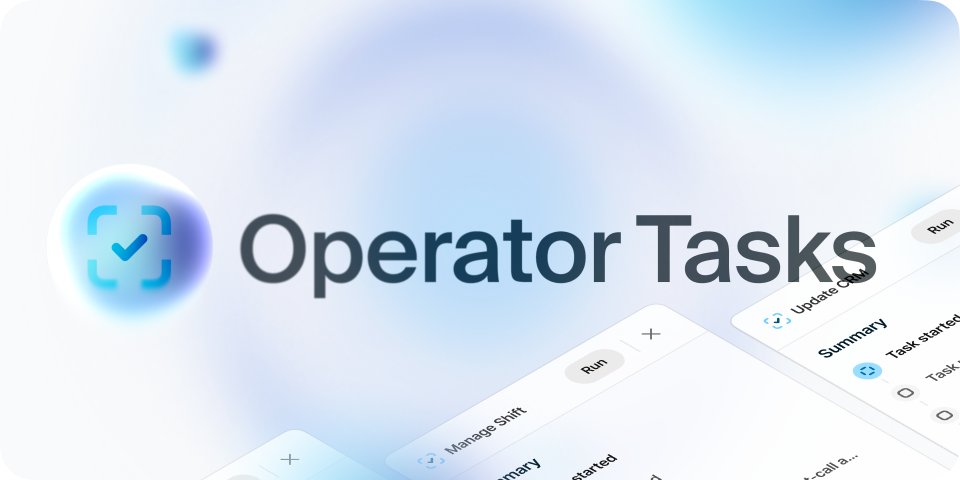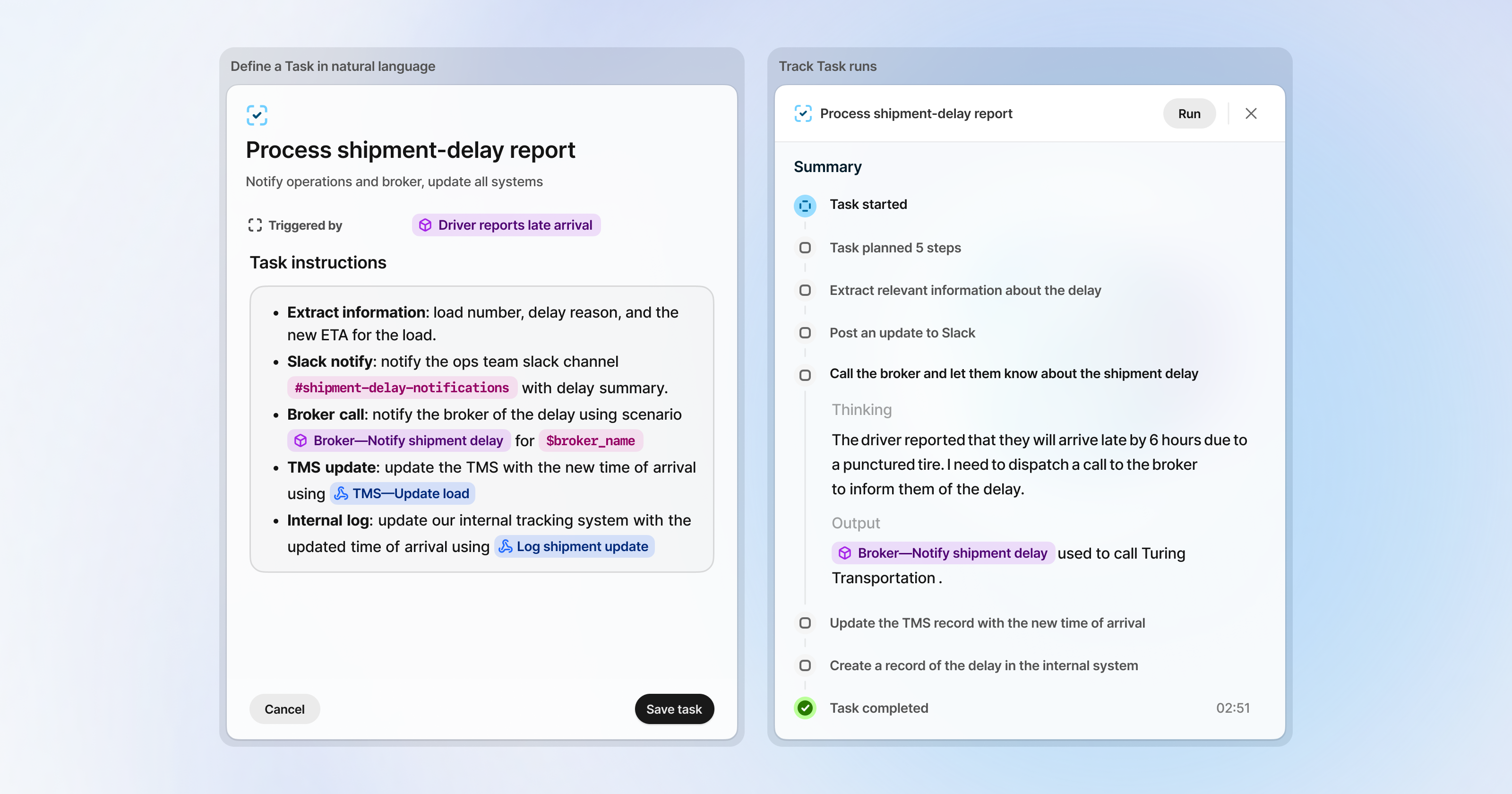Operator Tasks
Maksim StepanenkoCo-founder
The call ends. The customer has their answer, your AI voice agent hangs up—and that's when the real work begins. Someone must update the TMS, tag the CRM, text the warehouse, schedule follow-ups, and loop in three more people who own the next steps. Each hand-off creates tiny cracks where time, money, and accuracy leak out.
Operator already handles the challenging part of voice: answering the phone, resolving questions, and sounding human. Yet even the perfect conversation leaves unfinished business, and this is where traditional voice bots fall short. Teams end up stitching together ad-hoc Zapier zaps, scripts, or—worse—manual checklists to finish the job. It works until volume spikes or a single step changes, then the whole Rube Goldberg contraption wobbles.
Introducing Tasks
Operator Tasks transforms post-call chaos into a clean, programmable workflow—without requiring any traditional code. Thanks to advanced reasoning models, you can now describe automation logic in plain English, and Operator executes it instantly on the raw call data. Here's what that looks like in practice:
- Composable actions. The moment a call ends, you can fire off any sequence of Tasks—update a CRM record, draft an email, launch a compliance check—each one aware of the full transcript, metadata, and recording.
- Shared memory. Tasks write to a built-in state store as they go. Downstream steps (and even future calls) can pull that data to keep multi-stage processes perfectly in sync.
- Decision logic in plain English. Modern AI reasoning models let you describe when and how Tasks run using natural language prompts instead of code. One line of English decides which path fires for each customer, order, or compliance region.
All of this happens natively inside Operator, right where the voice data lives. No brittle webhooks, no glue scripts—just declarative instructions that scale with your volume and complexity.

Post-call automation use cases
Need to update five systems of record? Run a sentiment model? Fire a burst of outbound calls? Send a Slack thread with the highlight that matters? Tasks handle all of it—instantly and deterministically—so your team can focus on higher-value work. Below are just a few examples that we are excited about:
- Multi-party dispatch. When a load status changes, trigger a burst of outbound calls—driver, warehouse, consignee, backup driver, customer—so everyone stays in lock-step.
- Real-time compliance audits. Parse every transcript for required disclosures or safety language the moment the call ends, and flag exceptions to legal automatically.
- System-of-record sync. Keep CRMs, TMSs, WMSs, and EHRs perfectly updated—no spreadsheets, no copy-paste.
- Instant follow-ups. After quoting insurance, email the policy PDF, text a payment link, and log the deal in Salesforce within seconds of the end of the call.
"Operator Tasks turns every call into structured, actionable data. Our Operations team can now jump from conversation to decision in seconds—and we've reclaimed hours of manual follow-ups every day." — Faris Ibrahim, Software Engineer, Traba
Get started today
Whether you run an operation that juggles freight updates, policy renewals, and field-service calls—or you simply want every support intake to wrap itself up—Operator Tasks closes the loop instantly. It's a simple, powerful primitive that scales with your complexity.
Get started to see how Operator can help you automate and scale your operations.